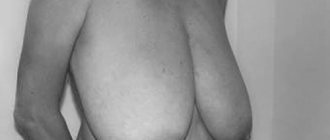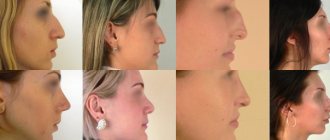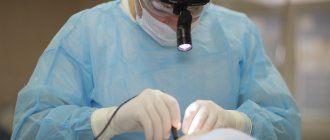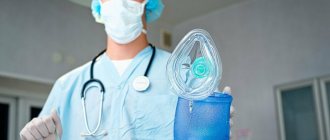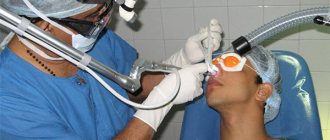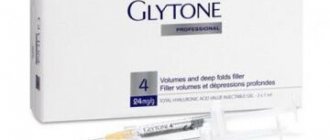Vasotomy is a surgical procedure in otorhinolaryngology whose purpose is to reduce enlarged nasal turbinates. It is used as a treatment for changes in the turbinates that affect normal nasal breathing.
It should be noted that the term “ Vasotomy ” often refers to other surgical methods for correcting the nasal turbinates.
That is, vasotomy is not just one operation, but a general term for various surgical procedures that are used to reduce anatomically altered (enlarged) nasal turbinates. With the help of this corrective effect on the turbinates, it is possible to improve nasal breathing, which leads to the elimination of chronic recurrent infections.
Causes of vasomotor and hypertrophic rhinitis
In the nasal cavity there are the nasal turbinates (inferior, middle, superior), which consist of a huge number of different plexuses of blood vessels. They narrow and expand, thereby regulating the lumen of the nasal passage, and consequently, a person’s breathing. The narrowing and expansion of these vessels depends on the temperature and humidity of the environment, atmospheric pressure, etc. For example, in the cold season, the vessels in the nose expand, and this allows you to inhale cold street air more slowly, which warms you up better.
The mechanism for regulating vascular tone can be disrupted under various pathological and physiological conditions, such as:
- deviated nasal septum;
- allergic rhinitis;
- endocrine diseases;
- pregnancy.
At the same time, the vessels that are located under the nasal mucosa are constantly filled with blood, which significantly thickens the mucous membrane, and therefore interferes with proper breathing through the nose. This leads to the development of vasomotor rhinitis , and in the long-term process to hypertrophy of the nasal turbinates and persistent difficulty in nasal breathing.
Possible complications of vasomotor rhinitis
With constant difficulty in nasal breathing, patients often begin to use vasoconstrictor drops for a long time, which leads to negative consequences. Using decongestants for more than 5–7 days may cause:
- damage to the ciliated epithelium in the nasal cavity;
- development of chronic dry rhinitis, accompanied by the formation of crusts in the nasal cavity, sanguineous discharge from the nose;
- chronic vasospasm and, as a result, increased blood pressure;
- chronic cerebral hypoxia;
- disruption of ventilation of the paranasal sinuses and patency of the auditory tubes, which subsequently leads to the development of various pathological processes in the paranasal sinuses and middle ear.
It is to prevent all these complications that it is necessary to consult a specialist as early as possible.
Preparation for the procedure, features of the procedure
As preoperative preparation, the doctor prescribes preliminary tests - a coagulogram, a general blood test, a throat smear, and also a rhinoscopy.
If there are infectious foci or inflammations in the throat, auditory or respiratory tract, special therapy is prescribed to eliminate them. Before the operation, the doctor sanitizes the oral cavity.
Each type of vasotomy is performed according to a specific scheme. The operation can be bilateral or unilateral.
Instrumental vasotomy. It is carried out using local anesthesia. The mucous tissue of the shells is lubricated with a solution of dicaine, in addition, the tissue is infiltrated with lidocaine or novocaine. Injection anesthesia is allowed.
When the anesthesia begins to take effect, the surgeon makes an incision up to 2-3 millimeters long. It reaches deep into the bone. A raspatory is inserted into the hole, with which the doctor removes the required volume of mucous membrane. As a result, the size of the epithelium decreases, and scars form in place of the separated tissues.
Instrumental vasotomy with lateropexy implies, in addition to affecting the mucous membrane, also moving the nasal concha towards the maxillary sinus.
At the end of the procedure, the patient is given an injection of an anesthetic, since after the anesthesia wears off, he will feel significant soreness at the operation site. Gauze swabs are inserted into the nasal cavity and cannot be removed during the first 24 hours.
The normal state after instrumental vasotomy is weakness, apathy, increased tearfulness, and dizziness. A mandatory requirement of the rehabilitation process is the need for daily nasal rinsing to prevent the formation of crusts.
Laser vasotomy. It is also performed under local anesthesia. Typically, cotton swabs soaked in anesthetic are used and inserted into the nose.
To better visualize changes in the epithelium, it is stained with methylene blue before the intervention begins.
The patient is placed on the couch, his head is located on the headrest. Special protective glasses or a bandage are put on the eyes. While the surgeon operates the laser, the patient must lie completely motionless. You need to breathe through your mouth during the process so as not to feel the characteristic “scorched” smell.
A surgical speculum is inserted into the nose, giving the doctor an overview of the surgical site. Next, a source of laser radiation is inserted - a special sensor, which the surgeon continuously moves over the mucous membrane, or acts on it pointwise.
The effect of cutting off excess tissue is produced by introducing quartz fiber into the submucosa, which forms channels in it. At the same time, the laser beam also produces coagulation of blood vessels, so the operation is bloodless and does not require tamponade, and also does not cause tissue fusion.
The operation can last from 30 to 60 minutes.
Radio wave interference. In this case, the complete immobility of the operated patient is of great importance, so he is often immersed in a state of medicated sleep by injecting an anesthetic intravenously. A tube is inserted into the throat to drain the blood. Next, a special probe is inserted into the submucosa. A radio wave of a certain length is produced between it and the transmitter. Due to the resulting tissue resistance, they heat up and collapse. Non-thermal exposure is considered safer when a strongly cooled area appears around the inserted probe, which also leads to the destruction of pathologically altered tissue.
At the end of the procedure, the patient is transferred to the ward. When the anesthesia wears off, a person may experience severe pain in the nose, as well as migraines and spatial disorientation.
For the next week after surgery, the nasal cavities should be washed with disinfectant saline solutions, and crusts should be removed using peach oil or petroleum jelly.
The total duration of the process is no more than 40 minutes.
Ultrasonic disintegration. It is performed in the ENT office, meaning there is no need to transfer the patient to the operating room. The doctor puts a protective apron on him, as bleeding may occur. A conductor of ultrasound waves in the form of a spoke is introduced into the submucosal tissue of the shells, which pierces the epithelium.
Due to ultrasound exposure, the vessels become stenotic, that is, they stick together, and they can no longer provoke the appearance of edema.
At the end of the procedure, sterile gauze swabs are inserted into the nostrils, and the patient can go home.
On the first day, the normal reaction of the mucous membrane will be the separation of ichor. After 3-7 days, nasal breathing is completely restored.
If the mucus crusts that form cause discomfort to a person, you should consult a doctor to have them removed.
The duration of ultrasound vasotomy is from 5 to 50 minutes.
Vacuum resection. This type of operation is performed under local anesthesia, as well as endoscopic control. Once the anesthesia begins to take effect, the surgeon makes an external incision with a scalpel and then inserts a vacuum tube into the submucosa. The tube has a sharp edge, and as it moves inside the tissue, it partially cuts them off. The pump to which the tube is connected creates negative pressure in it, and all cut-off tissues, along with blood, enter its cavity.
The surgeon, removing the tube, inserts a cotton swab or ball into the nostril, with which the epithelium is tightly clamped at the site of the incision in order to prevent the development of bleeding. After 30-60 minutes the ball is removed.
Vasotomy of the nasal turbinates (coagulation of the nasal turbinates)
Methods for performing turbinate vasotomy
We perform endoscopic turbinate vasotomy - a gentle and safe procedure that preserves the functional structures of the nasal passages. If earlier the essence of turbinate vasotomy was that the patient’s nasal cavity had a dissection of the vascular connections between the mucosa itself and the periosteum using a scalpel, today the most modern vasotomy techniques are used by coagulating the inferior turbinates. We perform:
- submucosal vasotomy with lateroposition of the turbinates;
- bipolar coagulation;
- radio wave coagulation (diathermy).
How is turbinate vasotomy performed?
- The operation is performed under general anesthesia with controlled hypotension.
- The surgeon, using special endoscopic instruments, performs manipulations in the narrow anatomical space of the nasal cavity. At the same time, a good overview of the surgical field on the monitor allows you to perform all manipulations as accurately as possible. The doctor performs coagulation of swollen or hypertrophied parts of the nasal turbinates with further later positioning.
- Effective hemostasis (coagulation, hemostatic sponges) during surgery makes it possible not to use nasal tampons in the postoperative period, which facilitates the patient’s general condition, eliminating the painful procedure of removing nasal tampons.
- After the operation, the mucous membrane begins to decrease in size, the swelling of the tissues is completely relieved, and the nasal turbinates themselves also shrink. And most importantly, the patient regains normal nasal breathing.
- The operation lasts about 20–30 minutes.
Submucosal vasotomy of the inferior turbinates is complemented by lateralization. This is a mechanical maneuver in which the surgeon breaks the inferior nasal concha at its attachment point and moves it as far as possible to the side wall of the nasal cavity to expand the lumen of the common nasal passage and increase the volume of the air stream
Postoperative recovery.
The patient is under the supervision of a doctor in the clinic for some time. As a rule, tampons are not installed in the nasal cavity, because after surgery there is usually no bleeding, but reactive edema may develop, which is not a complication. Breathing may be difficult for a period from 3 days to 2-3 weeks; it is also necessary to avoid flights, physical activity and hot water procedures. During rehabilitation after vasotomy, it is recommended to strictly follow all doctor’s instructions.
What are the indications for treatment?
The following indications for the operation are distinguished:
- Deviated septum.
- Various pathological processes.
- Drug addiction syndrome.
- Vasomotor rhinitis.
- Hypertrophy of the nasal mucosa.
What are the contraindications for treatment?
The following contraindications for the operation are identified:
- Various mental disorders.
- Lack of platelets in the blood.
- Upper respiratory tract problems.
- Acute infections.
- Aggravated seasonal allergies.
- Aggravated chronic diseases.
- Individual pregnancy and lactation.
Conchotomy of the nasal turbinates
In case of hypertrophic rhinitis, submucosal conchotomy is performed with reduction of the nasal turbinates, which allows preserving the inferior turbinate as an organ, while reducing its size and restoring nasal breathing. Most often performed for severe hypertrophy of the posterior sections of the inferior nasal concha. In this case, hypertrophied sections of the inferior turbinate are cut off submucosally, followed by coagulation of excess mucosa with a bipolar coagulator. The operation is performed under general anesthesia and lasts about 20–30 minutes.
After surgery on the nasal turbinates
In the postoperative period, ability to work is restored within 5–7 days. It is not recommended to fly by plane, do active physical activity, or undergo thermal procedures (bath, sauna) for 14 days to a month.
Vasotomy – what do patients need to know?
Vasotomy must be performed under general anesthesia, since the procedure requires precise work by the surgeon, and the patient's movement can lead to a negative impact on the outcome of the operation.
Discontinuation of blood thinning drugs such as acetylsalicylic acid should be done after consultation with your doctor 7-10 days before surgery. Stopping medications for a short period of time significantly reduces the risk of postoperative bleeding.
Contraindications to vasotomy and conchotomy of the nasal turbinates
The main contraindications to operations on the nasal turbinates are:
- acute inflammatory diseases in the nasal cavity and paranasal sinuses
- bleeding disorder
- atrophic and ulcerative processes of the mucous membrane of the nasal cavity..
- severe concomitant diseases in the stage of decompensation (heart, kidney failure, diabetes mellitus, etc.)
Endoscopic vasotomy and conchotomy, performed at the Yauza Clinical Hospital, make it possible to preserve the nasal concha, and most importantly, to restore free nasal breathing.
How is the procedure done?
The treatment process takes place in 3 stages, each of which must be given serious attention:
- Preoperative preparation.
- Carrying out laser vaporization.
- Postoperative recovery.
Preoperative preparation.
The patient must first undergo tests, which include a blood test for coagulation, a general clinical blood test and others (as prescribed by the doctor). It is necessary to refrain from eating 2-3 hours before laser manipulation, since the operation is performed under local anesthesia. It is also prohibited to use drugs that are aimed at reducing blood clotting and alcohol the day before and on the day of laser treatment.
Advantages of endoscopic vasotomy and turbinate conchotomy
- Operations are performed with minimal tissue trauma.
- The use of general anesthesia with controlled hypotension allows us to minimize the risk of intra- and postoperative bleeding and perform surgical intervention as quickly and accurately as possible to prevent relapses of rhinitis.
- The use of endoscopic technology makes it possible to eliminate hypertrophy of even individual areas of the nasal concha with maximum preservation of the concha and mucous membrane.
- The development of various pathological conditions in other organs and systems is prevented.
- The procedures are painless and comfortable for the patient with a minimal rehabilitation period.
You can see prices for services
The undoubted advantages of MK reduction:
- No thermal effect. With this procedure, the “working” operating temperature is 40–50°C. Therefore, in the operation area, neighboring tissues are not cauterized or charred, nerve endings are not irritated, and significant swelling does not occur. As a result, the procedure is well tolerated and does not require large doses of local anesthetic drugs, and the recovery period is quick and painless.
- Preservation of the functional integrity of the mucous membrane, without the formation of scars and areas of atrophy on it. MK - reduction is not accompanied by coagulation, deformation and displacement of superficial tissues. The resulting incision is very thin and quickly heals by surface tension, and the ciliated epithelium continues to function fully.
- Narrow focus of influence, without the development of structural and functional changes in nearby tissues. Therefore, MK reduction can be safely performed near blood vessels and nerves.
- Minimal blood loss, the wound is almost dry during the procedure.
As a result of competently performed molecular quantum reduction, the nasal concha decreases in size, which immediately makes breathing easier for the patient. At the same time, the nasal mucosa continues to function fully, scar deformities do not form in the operation area, and drainage of the paranasal sinuses improves. MK surgery for the treatment of vasomotor rhinitis gives a quick, lasting and pronounced result.
Doctors at Dr. Korenchenko’s Clinic are highly qualified and have extensive clinical experience, and have the necessary practical skills and certificates. Our patients receive effective treatment that meets current clinical guidelines.
The manifestations of vasomotor rhinitis can be dealt with, and the doctors at Dr. Korenchenko’s Clinic will do this competently, as carefully as possible and with minimal discomfort for the patient.
Chronic runny nose, also called chronic rhinitis, is one of the most common diseases of our time. It affects about 20% of the adult population, and in some regions this figure reaches 35–40%. Moreover, 20–25% of the total number of chronic rhinitis occurs in the vasomotor form; allergic rhinitis is also common. The prevalence of chronic rhinitis is steadily increasing, which is regarded as a fairly serious medical and social problem.
Vasomotor rhinitis, despite its relatively favorable course and seemingly harmless symptoms, often significantly reduces the quality of life of patients, and therefore requires competent treatment.
Rehabilitation period
For several days after the vasotomy, nasal congestion will persist; this is a normal course of the postoperative period and should not cause a feeling of concern. During the week, you should follow the recommendations of the otolaryngologist:
- do not take hot baths, do not visit baths and saunas;
- exclude physical activity;
- take medications prescribed by your doctor.
You can make an appointment with an otolaryngologist and find out the price of vasotomy at the Stolitsa clinic by calling: 8(495)604-10-10.
Operation methods
Several methods are used to perform vasotomy. They are selected based on the patient's condition. The intervention is performed using the following techniques:
- conchoplasty - with it, part of the nasal concha is resected along with the mucous membrane in that area; submucosal – during the operation, the mucous membrane is separated and the vessels located under it are destroyed; lateropexy - in which the nasal concha is moved to the wall of the nostril and attached in this position.
This operation is now performed using modern minimally invasive techniques. Including using laser radiation. The impact of the laser beam is distributed over the entire surface of the mucosa. With it, a gentle effect is ensured by the absence of direct contact with tissues and timely sealing of blood vessels. Its use reduces the likelihood of tissue infection.

